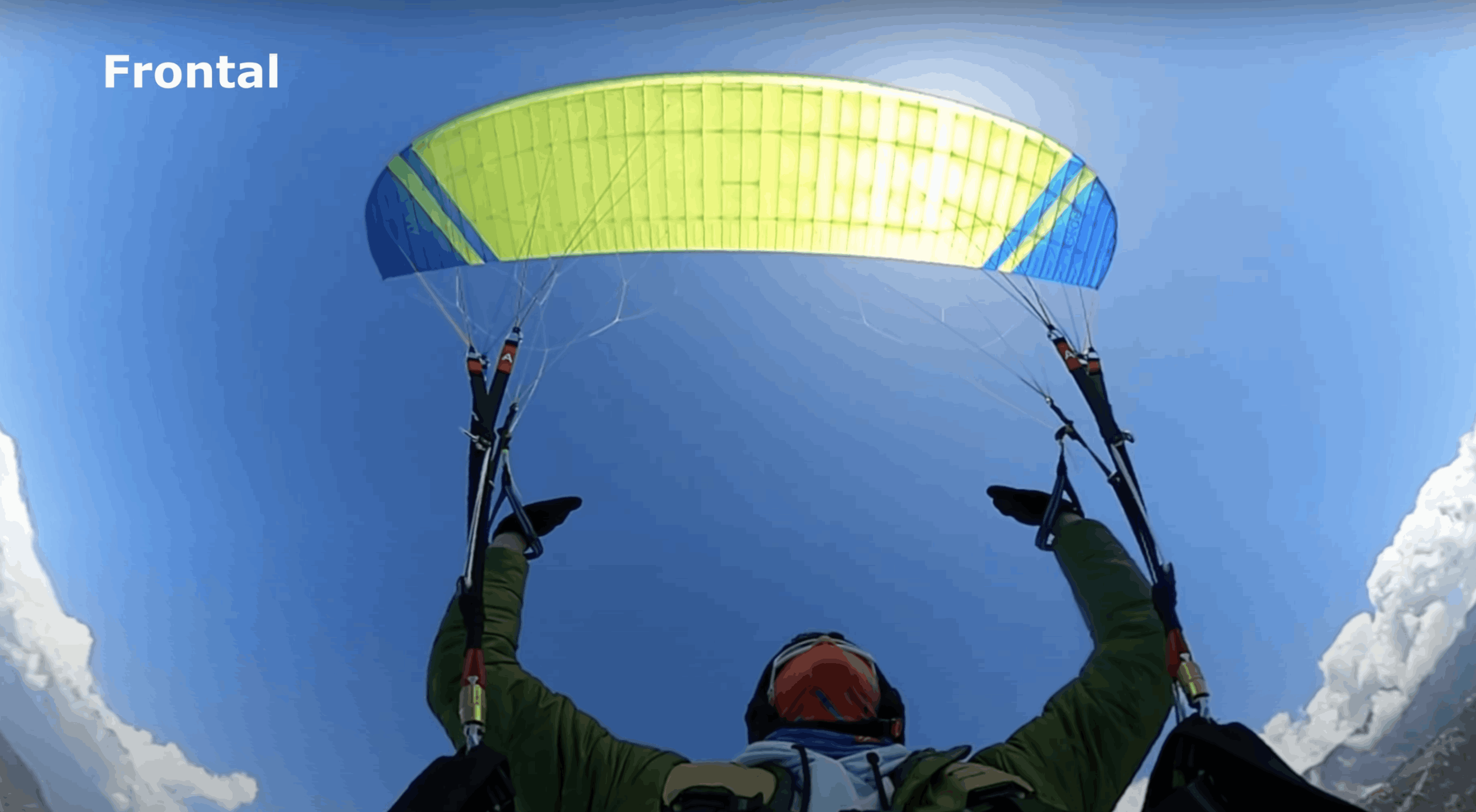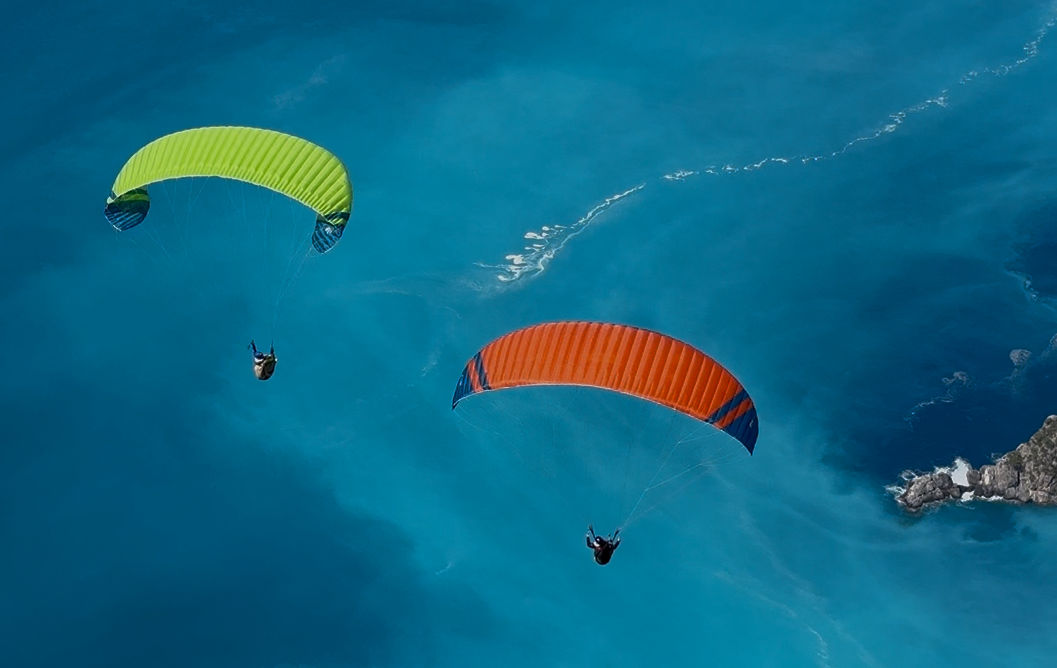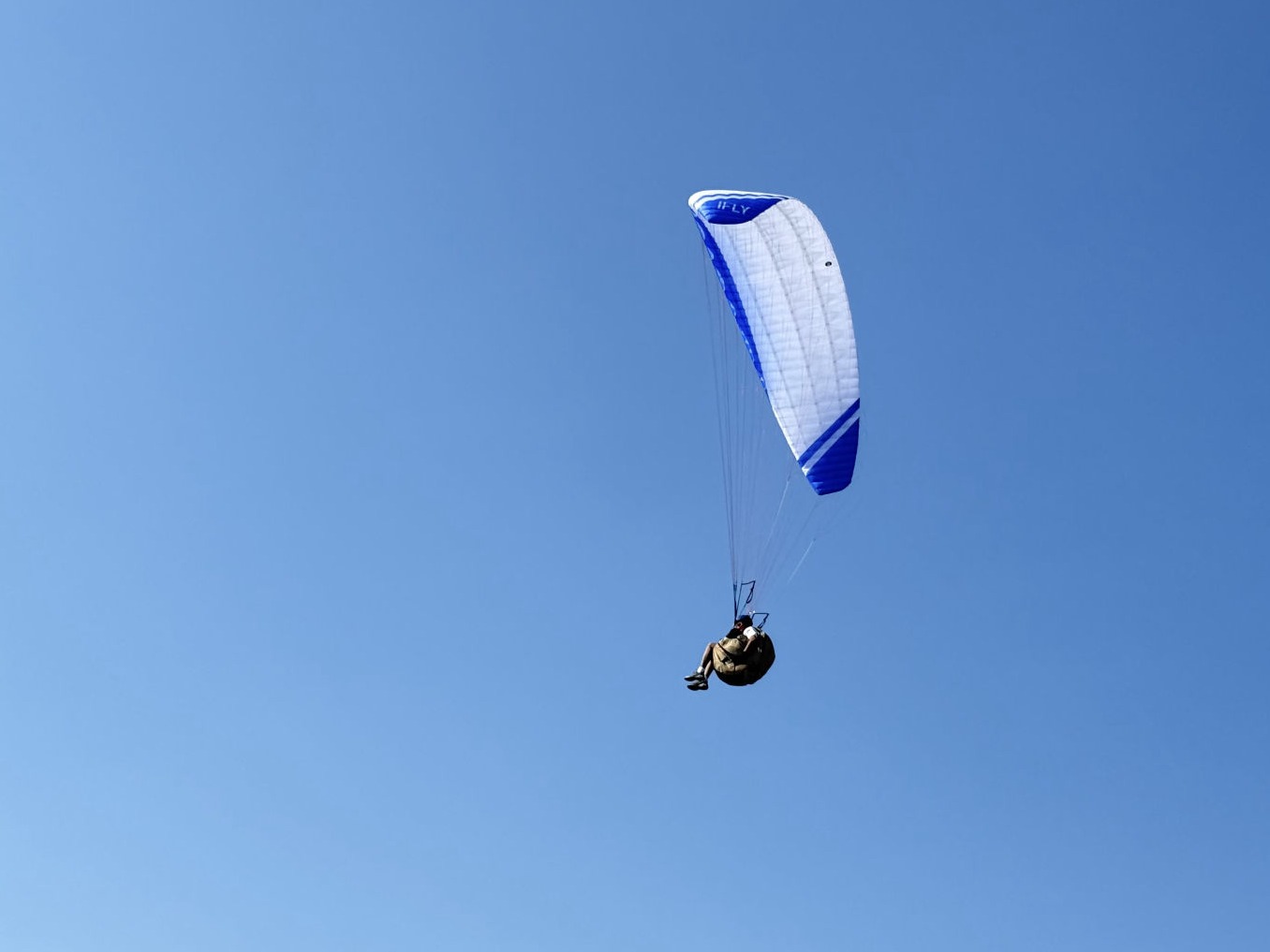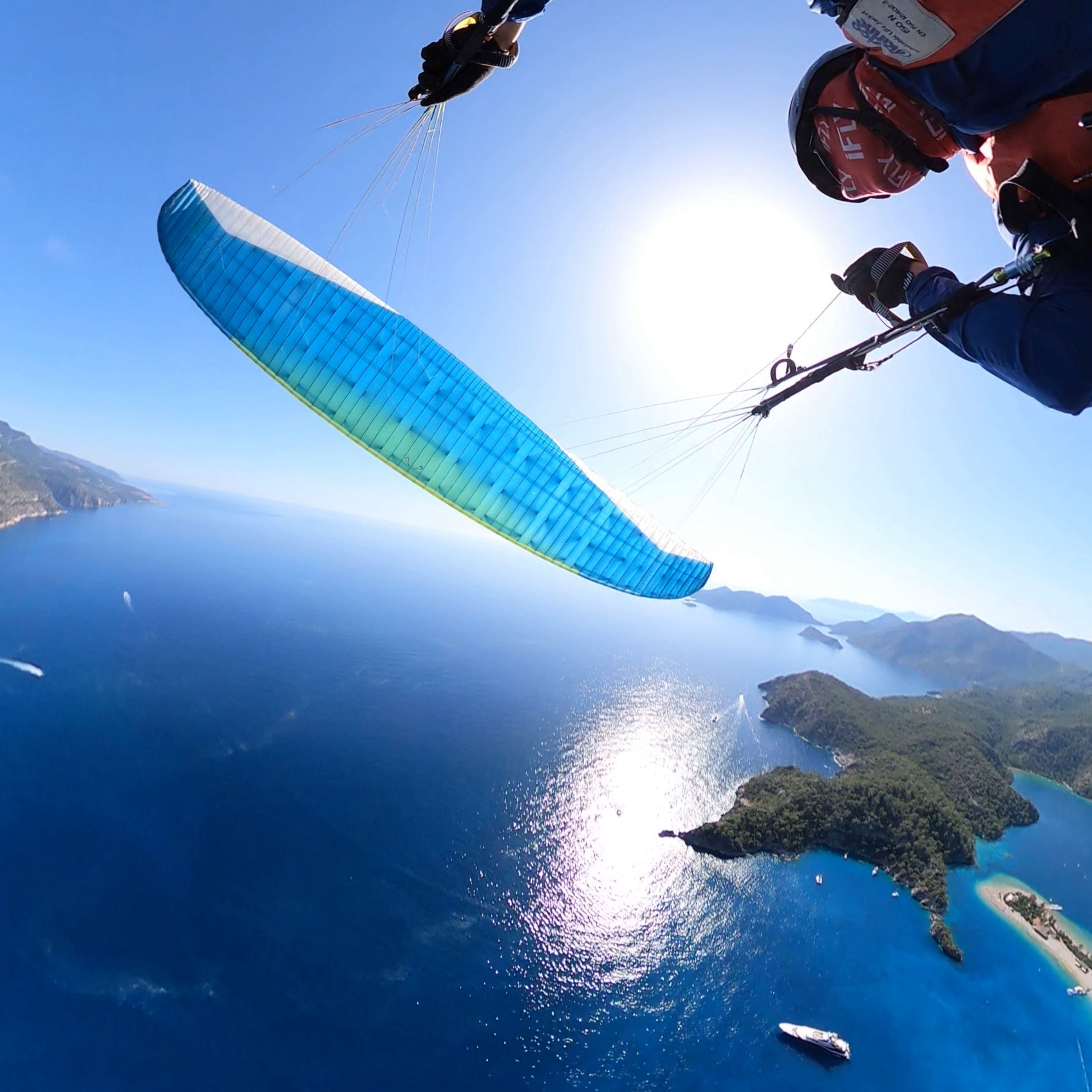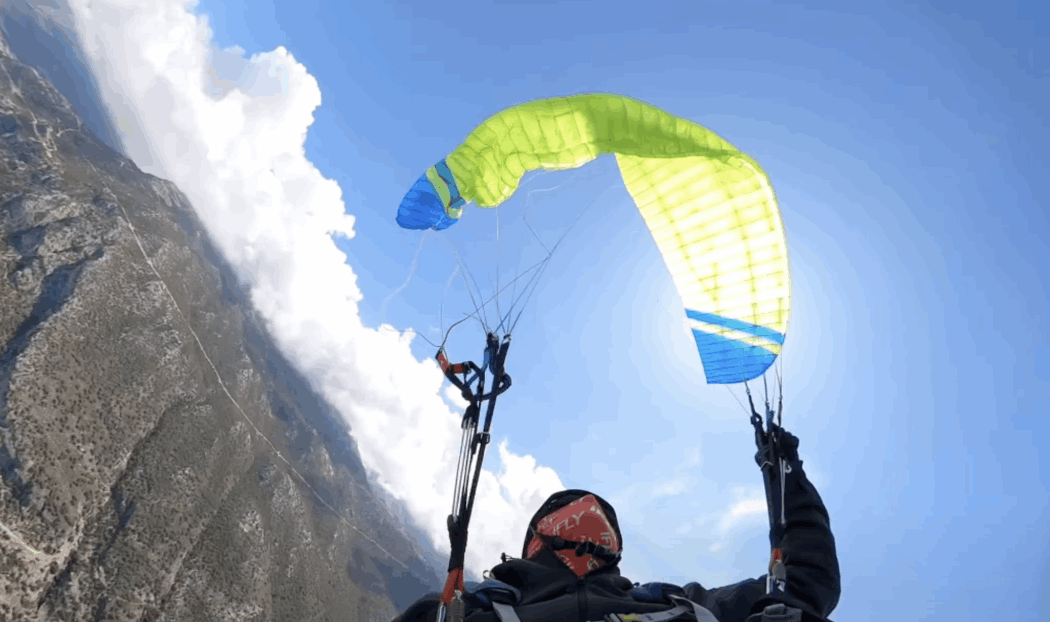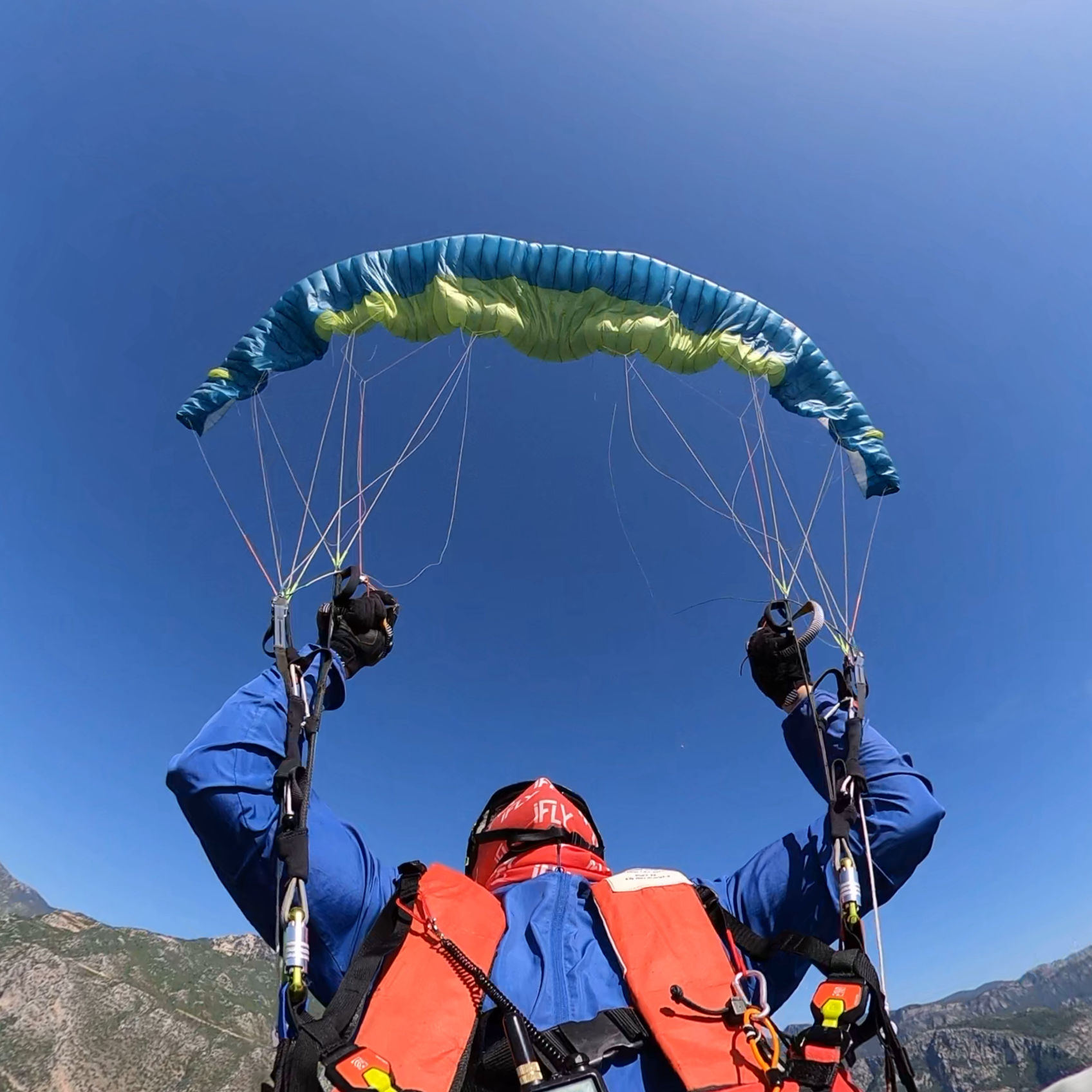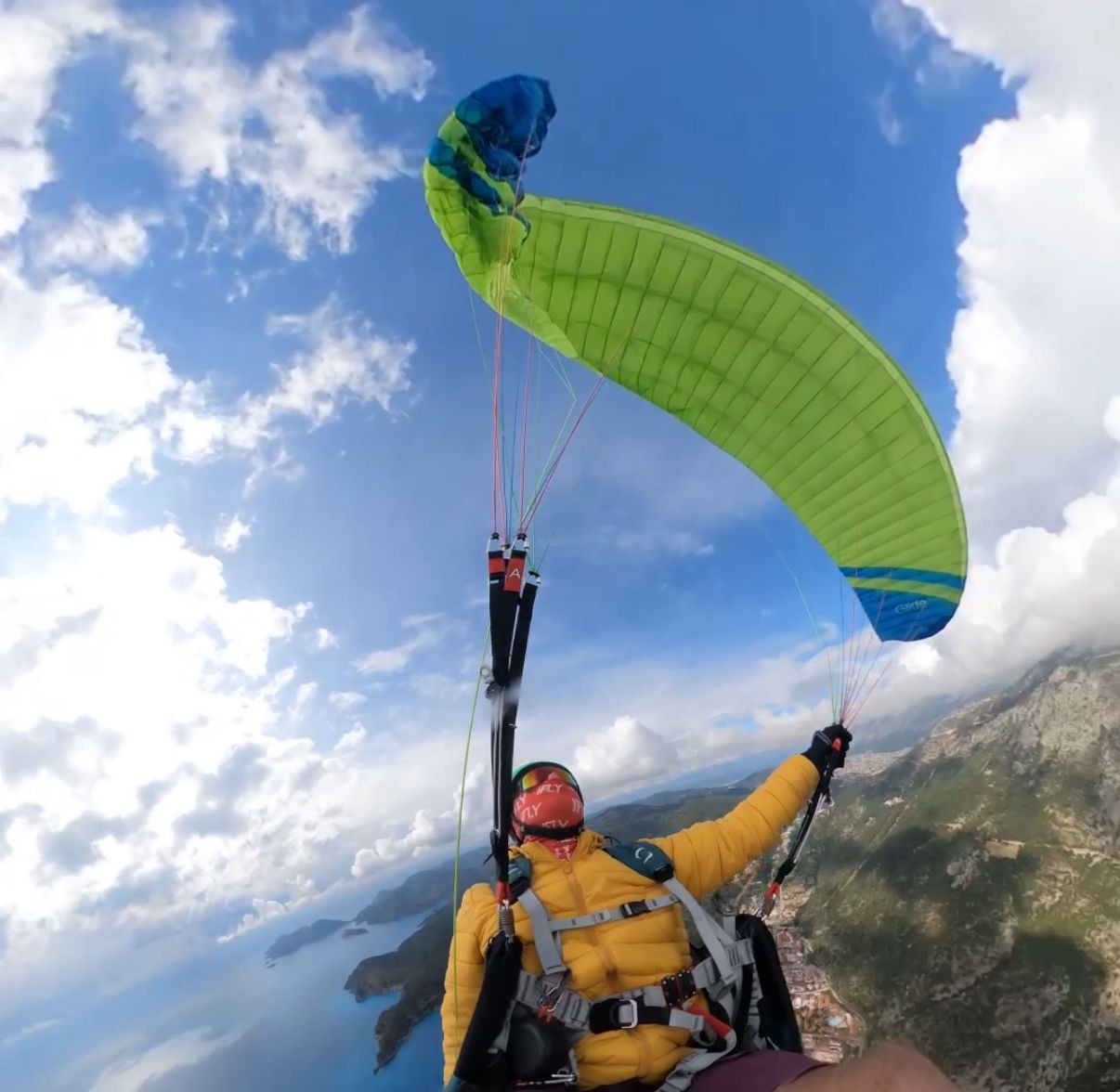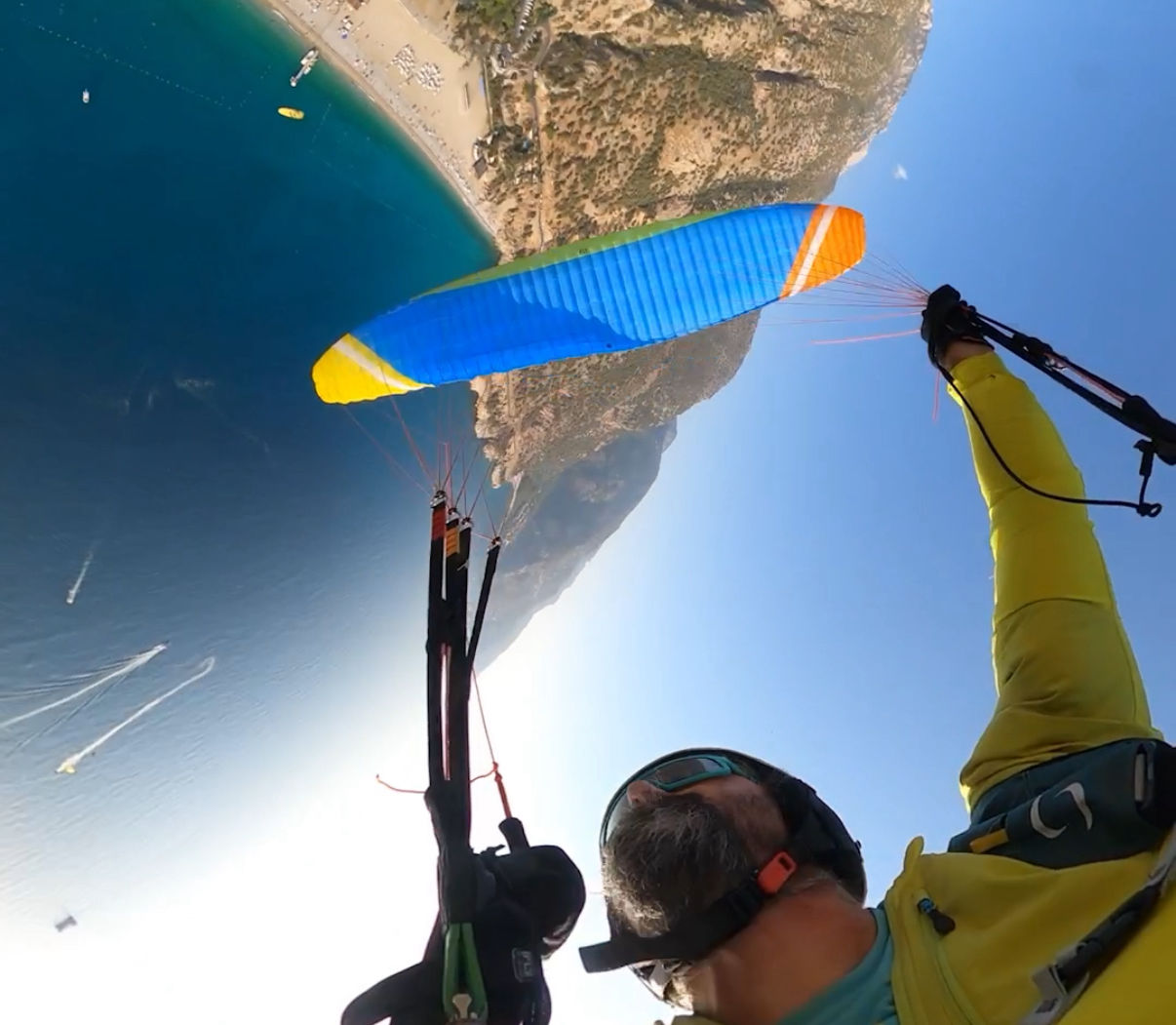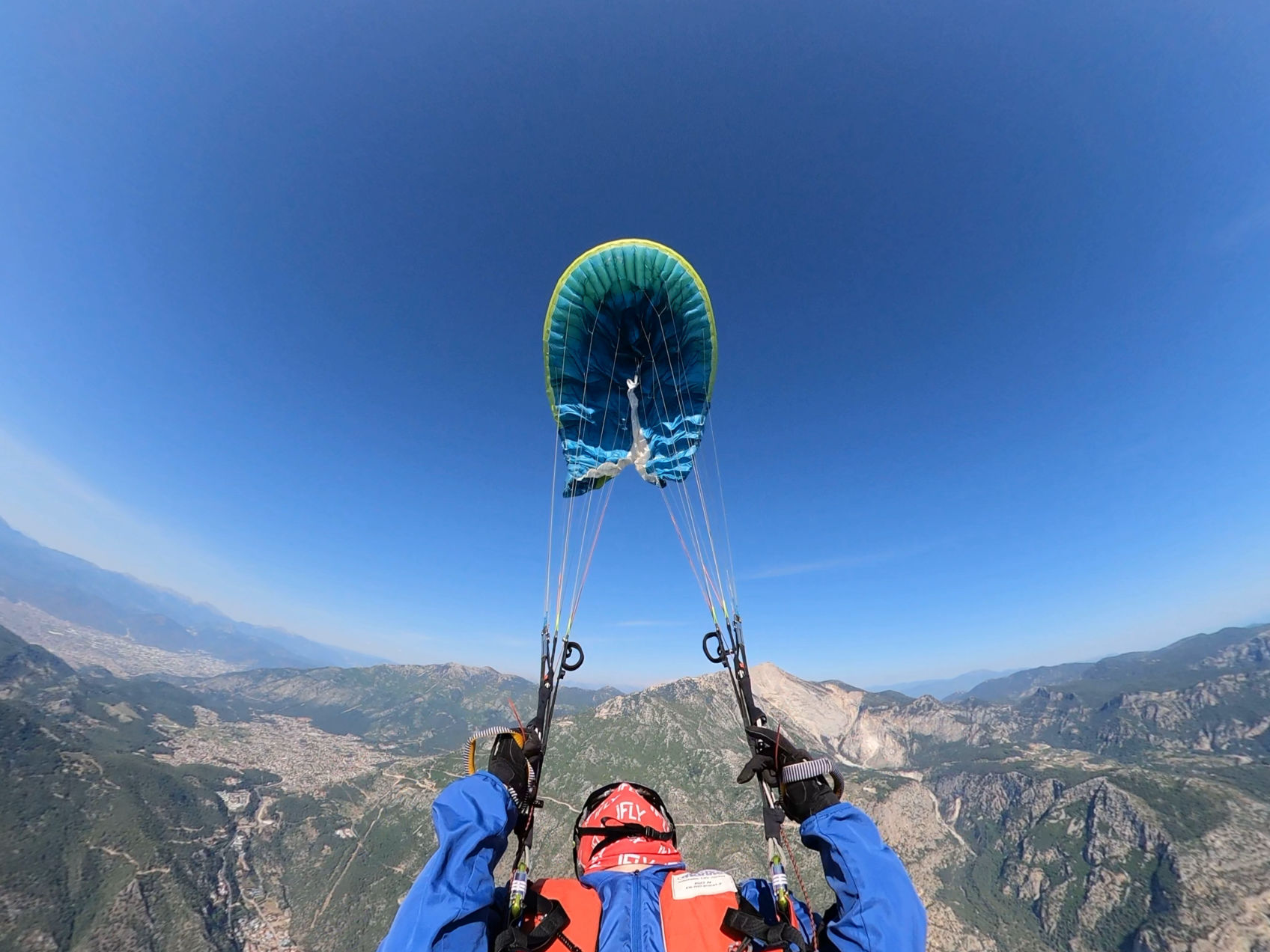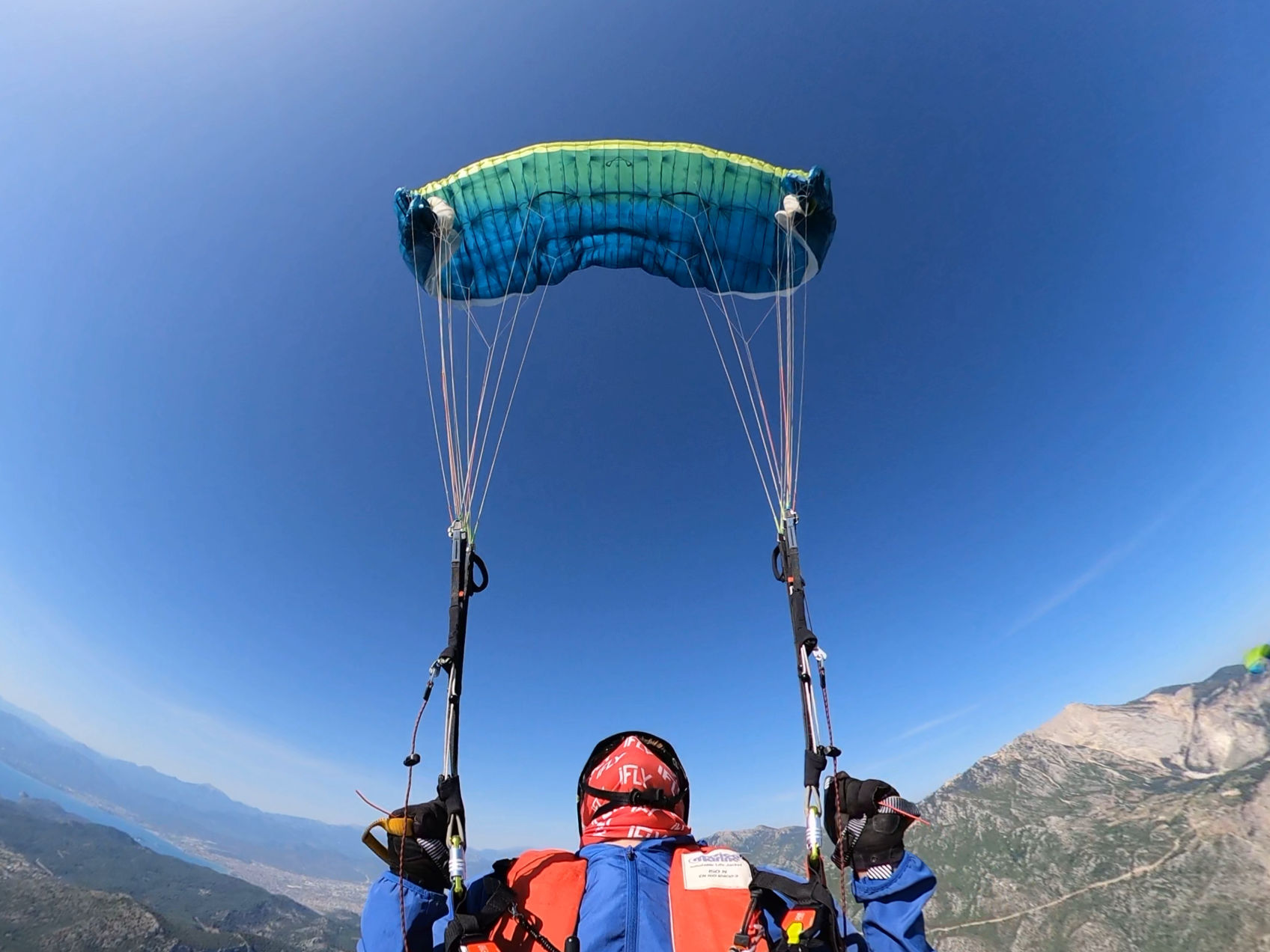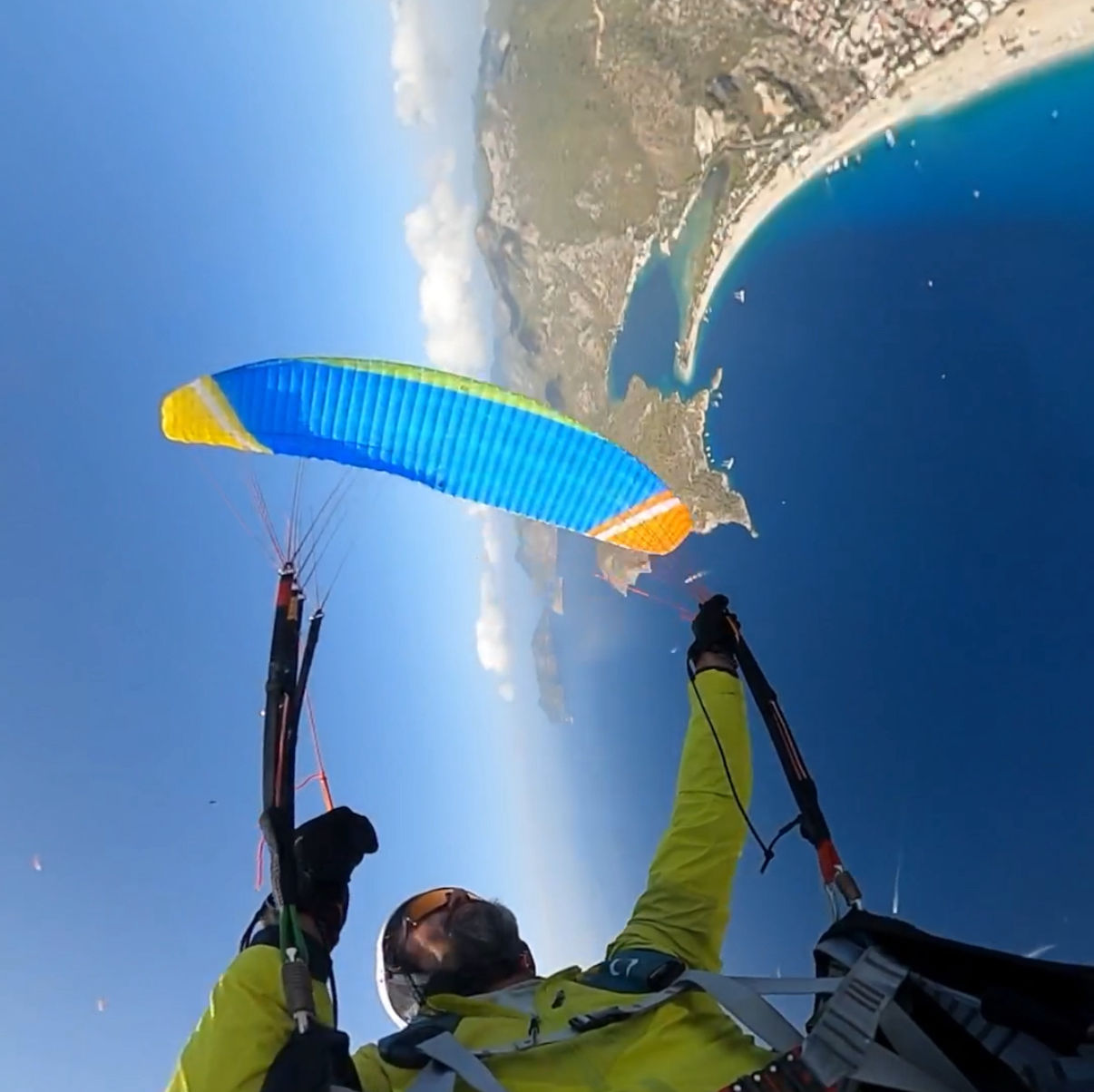Definition: The wing flies a horizontal circle while the pilot’s center of rotation is offset from the wing’s center.
Purpose: Entry-level acro maneuver to understand advanced energy management.
Execution: Start a turn, shift weight to the inside, progressively increase inside brake until the wing locks into SAT.
Expected Reaction: The wing remains open and stable, flying a circular path while the pilot feels sustained G-forces.
Recovery: Gradually release brake, return weight to center, and resume normal flight.
